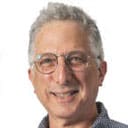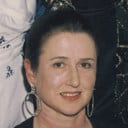Advanced computer data base backs NZ’s first sign language dictionary
Producers of the first-ever dictionary of New Zealand sign language say it will improve services for one of the most neglected minority groups — the deaf.
Managing editor Professor Graeme Kennedy said the project had developed the most advanced computer database in the world for analysing and recording sign language.
The dictionary of the natural language of deaf New Zealanders is being compiled by Victoria University and the New Zealand Association of the Deaf in a three-year project scheduled to be completed by next year.
The deaf were one of the most neglected minority groups in New Zealand in terms of education and social equity, Professor Kennedy said.
A classic case recently was the deaf man charged with murdering a child who was in jail two years while his case was being processed.
“He was totally forgotten about because he was deaf and didn’t have an advocate acting for him. If the man had had an interpreter it could have been shown that he couldn’t possibly be guilty.”
About 4000 people in New Zealand had been born deaf and had sign language as their natural first language. Between 300,000 to 400,000 people had impaired hearing from causes such as industrial accidents and old age.
There were few interpreters for the deaf but a two-year course for interpreters was set up last year at the Auckland Institute of Technology.
Professor Kennedy said the tradition had been to make people lip read but it was an inefficient medium.
“For a hundred years, in deaf schools in Christchurch and Auckland, children were strapped for signing — so it became a closet language which you did behind the bike sheds.”
Totally deaf Wellington woman Pat Dugdale, who is a British University graduate, and hearing-impaired American graduate David Moskovitz are working with Professor Kennedy on the project. They are being helped by teams of deaf volunteers.
Each sign, captured on video, is analysed by a computer, including facial expressions and hand movement in relation to the body and face.
Nearly $250,000 has been raised for the dictionary.
Photo captions: Pat Dugdale and David Moskovitz, both hearing impaired, talk to the computer in sign language. The computer analyses facial expressions and hand movements.
Dictionary of NZ sign language editor Professor Graeme Kennedy.
- Sign Language
- Technology
- TV/Media






















